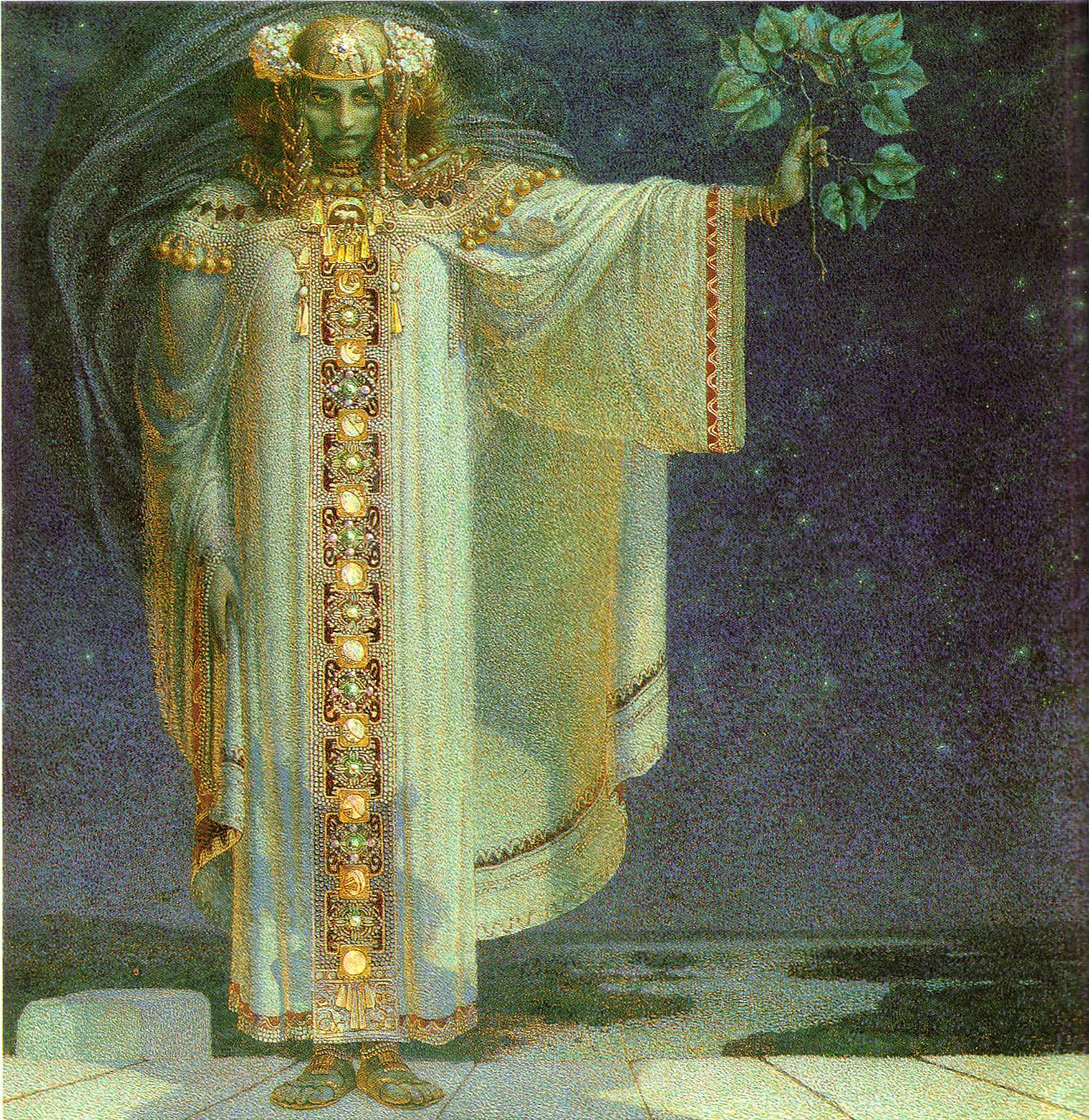Walter Benjamin’s allegory of the Angel of History—anchored in his idiosyncratic reading of Paul Klee’s painting “Angelus Novus”—reorients us toward time, or more precisely, toward material history. Benjamin imagined ‘progress’ as a growing pile of rubble pushing his witness backwards into the unknown, where once instead we might have imagined a Tower of Babel reaching ever skyward before toppling into sudden eschaton.
My ‘angel of history’ is the mythological Czech prophetess Libuše, a pagan witch who, in stories, foretells the founding of the city of Prague. In my allegory, Libuše exists in a vertical simultaneity of time, with the past below and the future above. Voices from the future call to her in the deep dungeon of the past and her voice echoes the message back, reflecting off the sedimentary strata of the walls of the pit. This is often the fantasy backdrop I use when genre elements are needed to make my game-like works fit into the history of games that they reference. Slavic mythology interests me not because of personal heritage, but because it reveals how different polities mobilized language, myth, and cultural symbols during a prolonged period of struggle—through kingdoms, empires, and nation-states—under immense internal and external pressures. At the heart of that struggle was a continual reimagining of who the community in the Czech lands was understood to be, shaped both from within and imposed from above, along with contests over who could lay claim to its cultural heritage and material wealth: fertile farmland and mineral resources that would help shape the fate of the world, including the a once productive mine that both filled the coffers of the first capitalist enterprises with silver and uranium that built the nuclear arsenal of the Soviet Union.
 The Prophetess Libuše, Vitezlav Karel Masek 1893
The Prophetess Libuše, Vitezlav Karel Masek 1893
The name “Libuše” might have originated from an ancient mistranslation. Kosmas of Prague first mentioned her in the Chronica Boemorum in 1125, but his enumeration of the names of the Přemyslov family (Libuše’s lineage, mythical chieftains of an early Czech tribe) closely resembles what could be a Latin transcription of Old Slavic words intended to deter Frankish aggressors (Karbusický 2009). In this light, the prophetess herself is a construction of language, a glitch of translation.
In 1817, a forged medieval manuscript containing an apparently undiscovered Slavic epic poem attempted to place the name “Libuše” even further back in history than Kosmas’ text. This is not an isolated incident—myths of many cultures often insert themselves into history through forgery and strategic archival placements (Thomas 2010). In this case, details were added to the myth of power passing from Libuše to a man, suggesting that ancient Slavic culture had a democratic character before the adoption of Christianity and patriarchy. This was the planting of a myth meant to be used as a foundation for a Czech national culture, but was pronounced a forgery by the first president of the new Czechoslovak state, the progressive philosopher Tomáš Masaryk.
An opera about the prophetess by nineteenth century Czech composer Bedřich Smetana, dismissed by the critics of his time, was performed in the Prague national theater in 1939, under nazi occupation. separated from the incongruous, melancholy facets of the myth (such as a bloody war between the sexes brought on by Libuše’s ceding power to a husband), the unremarkable opera became a rousing ode to an oppressed independent nation, and was met with thunderous applause by its audience and promptly banned by the Nazi occupying force. In some versions of Libuše’s prophecy, she foresaw not just the building of Prague but predicted the mining of the Ore Mountains (Jirásek 1894). After speaking the locations of Silver, Gold, Lead and Tin lodes, Libuše goes on to warn of the foreign invaders who will covet the metals, “Beware, lest from the gifts of your own earth He should forge fetters to enslave you,” (Jirásek 1894). With each shift in power, rulers of the Czech lands altered Libuše’s prophecy, grappling for control of both the mines and history. The prophetess knows the future because she is compelled to utter the words of future writers. Her words sound not in the past, crowded with the unresponsive dead, but with us in the future. The prophecy could be an argument for primordial communism or the divine right of kings, for feminism or patriarchy. Allegory, as Benjamin laid out in his work on the Origin of German Tragic Drama, Ursprung des deutschen Trauerspiels, is unfixed from its referent. It is “the art of the fragment, the opposite of the symbol, which presupposes the value of ‘Nature’ preserving unchanging, complete identities and values” (Tambling 2010, 5). An allegory changes meaning to meet the moment. It does not require much or any rewriting to do this. The political context of each retelling is a light of a different color in which some details become significant and some become noise. That which is obvious and didactic can become camouflage for some concealed punctum. Walter Benjamin’s idea of jetztzeit—a “messianic” time opposed to the homogeneous, sequential time measured by clocks and calendars, punctuated by ruptures that open opportunities for change—finds a rough parallel in moments of technological history when new possibilities suddenly emerge. The introduction of affordable ‘personal’ computing disrupted traditional barriers to technology and power to some extent but also reinforced existing inequalities. Computers represent more than just tools; they symbolize progress, inequality, hope, oppression, and cultural shift— a symbol of the future now itself old enough to be patinated with layers of nostalgia and trauma. The narrative of ‘technological progress’ is mythologized, set aside from its material origins, as a game sidesteps the world in which it is inset with heterotopic rules.